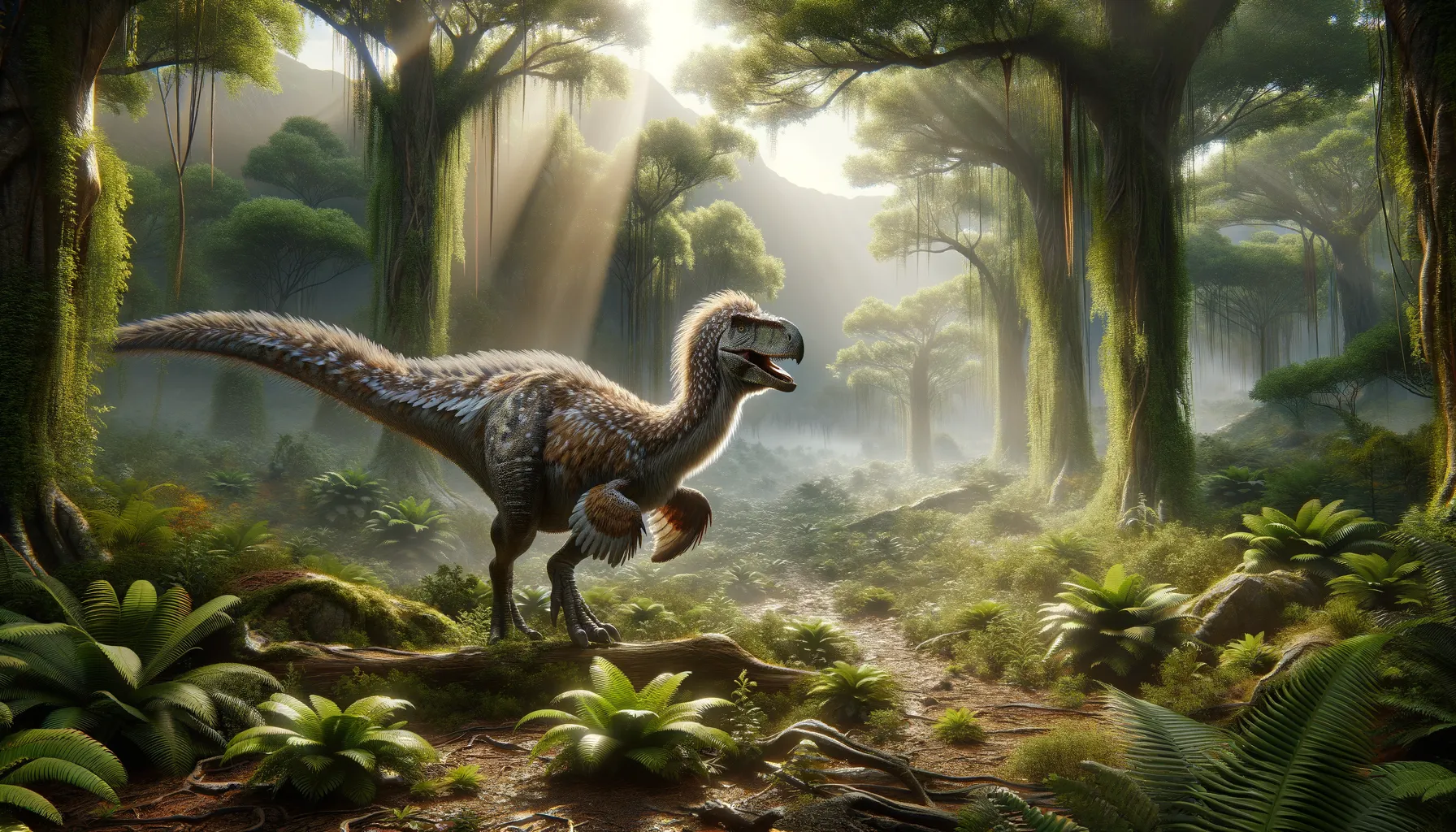
Zhenyuanlong
Feathered leap from past to present!
Period
Cretaceous
Length
Roughly 1.5 meters long.
Height
Approximately 0.8 meters tall.
Weight
Around 20 kilograms.
Zhenyuanlong was a feathered dinosaur that lived during the Cretaceous period in what is now China. It was about the size of a turkey and is known for its short but broad wings, which were unlikely suited for flight. Its fossil discovery offered significant insights into the evolution of feathers and wing structures, providing an important piece in understanding the transition from dinosaurs to birds.
Diet
Zhenyuanlong was likely carnivorous, feeding on smaller animals and possibly insects. It might have used its agility to catch prey in dense forests or open fields.
Hunting
Its sharp teeth and claws suggest that it was a predator, hunting small vertebrates or scavenging. It would have used stealth and quick movement to surprise its prey.
Environmental challenges
Zhenyuanlong lived in a period with significant climate changes, affecting its food sources. Predatory competition from larger theropods might have posed threats. Adaptations such as feathers might have helped in regulating its body temperature.
Speed
Probably not very fast, more agile than swift.
Lifespan
Estimated to be similar to modern birds.
First discovery
Discovered in China, in 2015.
Fun Facts
- Zhenyuanlong was a feathered dinosaur that lived around 125 million years ago during the Cretaceous period.
- It was discovered in the Liaoning Province of China, an area famous for its well-preserved fossils.
- Zhenyuanlong had wings, but scientists believe it couldn't fly due to its heavy body and short arms.
- This dinosaur was about six feet long, making it relatively large for a feathered dinosaur of its time.
- Its name, Zhenyuanlong, means 'Zhenyuan's dragon' in honor of the person who found the specimen.
- Zhenyuanlong's feathers were complex and similar to those found on modern birds, highlighting the connection between dinosaurs and birds.
- The discovery of Zhenyuanlong provided valuable insights into the evolution of feathers and flight in dinosaurs.
Growth and Development
Zhenyuanlong likely grew quickly after hatching, similar to modern birds. Feathers would have appeared early in development, indicating their importance in its life. Its growth stages provide insight into how feathered dinosaurs transitioned towards avian features.
Habitat
It inhabited forested regions providing ample hiding spots and hunting grounds. Its environment was lush, supporting a diverse range of other dinosaur species. The presence of water bodies might have influenced its habitat choice for food and nesting.
Interaction with other species
Zhenyuanlong might have competed with other smaller theropods for food. Its presence might have impacted local ecosystems by keeping certain prey populations in check. Coexistence with other species indicates diverse ecological interactions.
Natural lifespan
Its natural lifespan might have been around 10 to 20 years.
Reproduction
Egg-laying was the likely mode of reproduction, akin to birds. Parent dinosaurs might have cared for their young, protecting nests from predators. Nesting sites could be found in warm, sheltered areas to ensure egg viability.
Social behaviour
Zhenyuanlong might have been solitary or functioned within small groups. Social interactions could include mating displays utilizing its feathers. Territorial behavior is likely, especially during breeding seasons.
Fossil locations
Zhenyuanlong fossils were found in Liaoning, China. These fossil sites have been known for revealing important feathered dinosaur finds. The region provides a unique window into the diversity of life during the Cretaceous.
